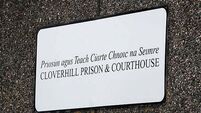Pensions to dominate negotiations on public service agreement

The pensions of almost 250,000 public servants are worth 12%-18% more than their private-sector counterparts while, for a further 23,000 state employees who have achieved their full pension in less than 40 years, the gap is even wider.
That is according to the Public Service Pay Commission (PSPC), which recommends those public servants should make an additional contribution to their pensions even as the current pension levy is phased out.













